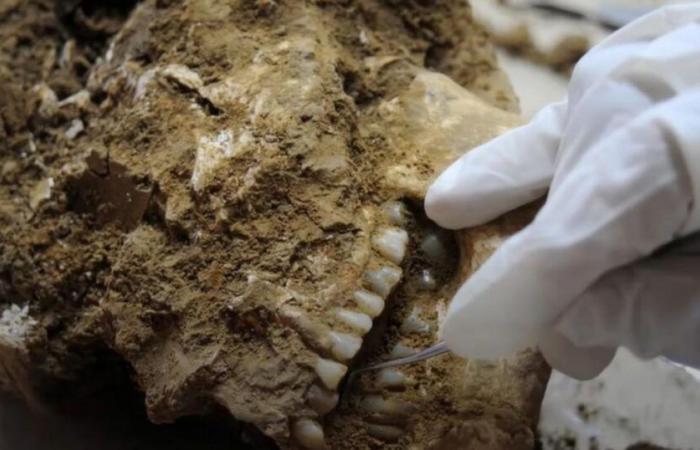Genomic research, supervised by researchers from the universities of Bordeaux and Côte d’Azur (Nice), has enabled a better analysis of the thousands of bones of around 75 individuals, dating from the Neolithic period, found in the burial site of Aven de la Boucle.
DNA analysis of their remains sheds light on the past of a Neolithic group in the Aven de la Boucle burial site in southern France, with a preference for men for nearly a millennium. Between 5,600 and 4,800 years ago, the bodies were lowered into the cave through a paved gallery, and some were placed on a bed of yellow earth to decompose. Then their bones were placed further into the room.
On the southern edge of the Cévennes, the chasm is one of the oldest collective burials known in the South of France. Discovered in 1954, the Aven de la Boucle began to be excavated twenty years later. Bringing to light the thousands of bones of around 75 individuals, accompanied by thousands of ceramic shards, elements of adornment and small objects.
It preserves a great deal of mystery about the meaning of funeral practices from an era that left no written traces in this region of the world.
Also readIn Nîmes, Gallic and Roman remains unearthed near the Tour Magne
Genomic research, supervised by a team of researchers from the Universities of Bordeaux and Côte d’Azur (Nice), is refining the conclusions previously reached by the study of bones.
With a sanctuary containing the remains of humans from two distinct cultural eras, spanning about 900 years, but probably belonging to the same group. “The first archaeologists already had a little idea about the sex of the individuals, but we were able to really confirm that there were many more men than women”explains to AFP Mélanie Pruvost, who supervised the study published Wednesday in «les proceedings B» of the British Royal Society.
The initial analysis of the bones showed remarkable bias, with a selection of the deceased largely excluding children. And a probable genetic proximity, as evidenced by the sharing of a remarkable anatomical peculiarity of the kneecap in a large number of subjects.
“We have highlighted many family links between these individuals”continues the paleogeneticist, CNRS research officer at the PACEA laboratory at the University of Bordeaux. Which leads to “hypotheses on access to this burial based on belonging to particular lineages”.
The study of the genome of 37 individuals, whose remains were deposited in the sinkhole over a period of 900 years, reveals that three out of four were men. And that they largely belonged to a lineage transmitted from father to son. The site does contain remains of women, but the preference given to the paternal lineage became almost exclusive in the last period of occupation of the site.
Mélanie Pruvost emphasizes that we “doesn’t necessarily have anything strict in terms of rules”and that “Most of the women found are related to other individuals”.
Access to the burial was “perhaps conditioned by a family relationship”. However, nothing excludes the possibility of a system where “women chose to be buried in the grave with their husbands, or chose to return to their original homes”. Archaeologists lack enough female bones in this case to draw further conclusions. Just as they do to explain the very small number of children’s bones. Something noticed on other sites, but just as unexplained.
To find out more, isotopic analyses could lift a corner of the veil on the origin of this population, and possible external contributions. “It seems more like a small local population.”according to Mélanie Pruvost. The site could still hold some surprises, because it is “one of the first excavations carried out with a rigorous technique of recording anthropological and archaeological data”.
This rigor allowed the PACEA team to establish that the discontinuity observed at the level of cultural elements, with very distinct ceramic styles, coincided with a genomic continuity of the population group. The question remains why, one day, this Neolithic population decided to condemn access to what could have become a sanctuary.






